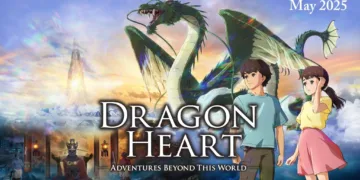Apple TV+ has released the first teaser for Chief of War, the highly anticipated epic starring and co-created by Jason Momoa, offering a glimpse of the forthcoming historical drama set in late 18th-century Hawai‘i. The brief trailer introduces Momoa as Kaʻiana, a noble warrior who returns from abroad to unite the warring island kingdoms against looming foreign threats.
The series, premiering August 1, 2025, will launch with its first two episodes before rolling out the remaining seven weekly through September 19, 2025. Shot predominantly on location and in New Zealand’s Bay of Islands—standing in for Hawai‘i’s shores—the production showcases large-scale battle scenes filmed in Kalapana’s lava fields last December.
Featuring a predominantly Polynesian cast, Chief of War stars Temuera Morrison as Chief Kahekili, Luciane Buchanan as Kaʻahumanu, and newcomer Kaina Makua as Kamehameha I, among others. Momoa both executive produces and co-writes the nine-episode miniseries alongside creator Thomas Paʻa Sibbett, with Justin Chon directing the first two episodes.
In interviews, Momoa described Chief of War as his “dream” project and an homage to his Hawaiian heritage, emphasizing the importance of speaking ʻŌlelo Hawaii‘i on screen and ensuring cultural accuracy throughout production. A former Game of Thrones collaborator praised the series’ authentic power, arguing its true-life epic stakes surpass those of high fantasy.
Despite its ambitious scope, the series has sparked debate over Hawai‘i’s film incentives and local economic impact. Industry reports note that major productions, including Chief of War, have opted to film much of their content outside the state due to high costs and limited tax credits, prompting calls from local lawmakers to restore or expand incentive programs to retain jobs and boost homegrown filmmaking.
As the first footage circulates, experts say Chief of War represents a landmark for Pacific Islander representation in mainstream media, potentially inspiring a new wave of indigenous storytelling and illuminating a pivotal chapter of Hawaiian history long overlooked by global audiences.
















































